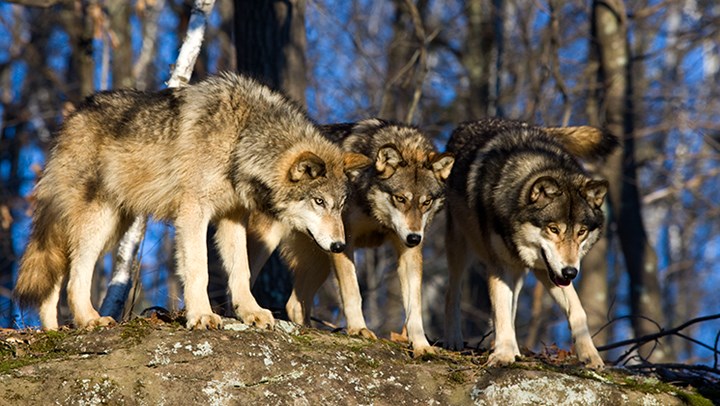
by Phil Phillips - Monday, July 30, 2018

Once again, animal rights extremists were wrong. Why? Because they base wildlife management decisions on emotion rather than on scientific evidence that clearly supports legal, sustainable hunting. Case in point: the delisting of Wyoming wolves.
With the state’s wolf populations thriving despite no federal protections, on July 11 the Wyoming Game and Fish Commission (WGFC) announced it is increasing the number of wolves hunters may take this year to 58 compared to 44 in 2017. As wolf numbers continue to expand following the species’ delisting there on Apr. 25, 2017, WGFC biologists now estimate the statewide population at 350 with 210 of the animals living in managed hunting areas. The goal of state game managers, who are the ones tasked with trying to control the wolves that sometimes prey on domestic livestock, is to decrease that 210 to 160.
According to WGFC wolf biologist Ken Mills, this would leave Wyoming with about 14 breeding pairs, easily ensuring it maintains its goal of a 100-wolf and 10-breeding-pair minimum statewide—the threshold limit preventing wolves from being relisted (at which time intense public education would be in order so non-hunters do not think Wyoming wolves are endangered again).
Of course, anti-hunting, animal rights groups are opposing the quota increase as they work to hijack human emotion to draw attention from the truth: Science-based decision making supports sustainable hunting. As reported by the Associated Press, Jonathan Proctor from the animal rights extremist group Defenders of Wildlife (DOW), argued, “Wolves are an important component of Wyoming's natural heritage, and should be managed toward achieving healthy and abundant populations across large landscapes so that they may perform their important natural role.” But that is exactly what legal, regulated hunting does.
Thank You NRA, SCI and WGFC
In protecting hunting’s future and its benefits to keeping wildlife populations in check, NRA and SCI teamed up when the DOW and other groups filed lawsuits against the U.S. Fish and Wildlife Service over its decision to delist the gray wolf in Wyoming (and other Rocky Mountain states). In conserving all wild game species into the future, biologists like Mills simply focus on facts. “Nothing has really changed,” he explained, in a separate interview with the Jackson Hole News and Guide. “It’s just that over time the number of wolves has changed. There are more wolves out there, and they’re demonstrating themselves to be more resilient to human-caused mortality.” Fortunately, legal, regulated hunting remains a cornerstone of wildlife management.
In a nutshell, Michael Jean, associate litigation counsel for the NRA Institute for Legislative Action, emphasized, “The wolves are surviving without federal protections.” And isn’t that the goal of the North American Model of Wildlife Conservation (NAMWC)? Just ask NRA First Vice President Richard Childress, who in 2014, alongside then-NRA President Jim Porter, had the NAMWC adopted as official NRA policy.
Stats on Wyoming Wolves
For more background on wolves in the Cowboy State, Wyoming has three separate populations: the Yellowstone population, the Wind River Reservation population and the state’s population described in this article. The state only has management authority over its population. The total number of 350 wolves statewide includes all three populations: 238 in the state (which was about 200 at the time of delisting), 97 in Yellowstone and 12 on the Wind River Reservation. Numbers are based on a December 2017 survey published on the WGFD website on Apr. 11.
E-mail your comments/questions about this site to:
[email protected]
